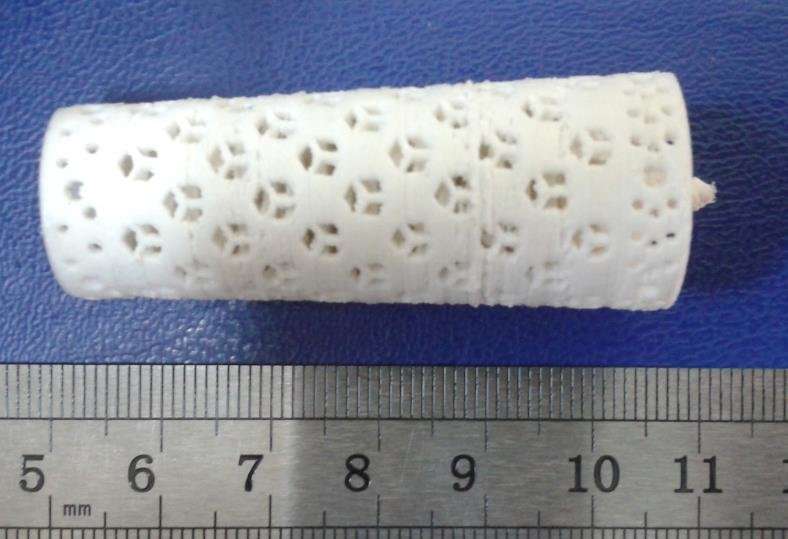TPU bioresorbable composite implants for testing at the Ilizarov Center. Credit: Tomsk Polytechnic University (TPU)
Russian scientists successfully tested biodegradable tibia implants with bioactive coatings out of polylactic acid and calcium phosphate, which might shorten the treatment period by two-four times compared to current world standards. Tests are carried out at Russia's largest Ilizarov Orthopedic Center.
A research team supervised by As.Prof. Sergei Tverdokhlebov developed a technology for manufacturing polymer implants out of a composite material, i.e. polylactic acid and calcium phosphate. It is a biodegradable material which fully dissolves over time. The implant samples 3-D-printed at TPU are now passing the preclinical tests at Russia's famous Ilizarov Orthopedic Center in Kurgan, and the first results are already announced.
In the Center, a tibia implant sample was successfully implanted in a dog suffering from a 2-4 cm bone defect. According to experts, X-ray and morphological monitoring showcased that while the defect was replaced with a new bone tissue the implant was completely degraded, i.e. dissolved. Such implants allow treating patients within one surgery, i.e. there is no need to remove implants since they are already dissolved. The study of implants is led by Prof., Principal Researcher at the Scientific and Clinical Laboratory for Deformity Correction, Lengthening and Bone Defects Arnold Popkov.
Professor Popkov says: "Such implants imply a fundamentally novel approach to the development of a treatment technology for patients with musculoskeletal disorders when structures interacting with a bone tissue are built taking into account not only biomechanics and materials science but also biological processes occurring in the damaged bone tissue, and bioactive products. The main idea is that while working with materials and coatings of implants, changing them, we can stimulate and control histogenesis of a bone tissue.
Ultimately, we are striving to shorten the restoration period of a bone tissue and to manufacture domestic implants.
For the treatment of bone fractures, Russia annually spends 6.5 billion rubles or even more to purchase the import implants. Therefore, analogue cylindrical and sectoral implants, as well as original personalized overosseous and intraosseous implants with bioactive coatings will enable us to shorten the treatment periods by two-four times compared to the existing world standards."
The material of the implants also provides for the introduction of pharmaceuticals with, for example, antibacterial and antitumor properties.
Provided by Tomsk Polytechnic University






















